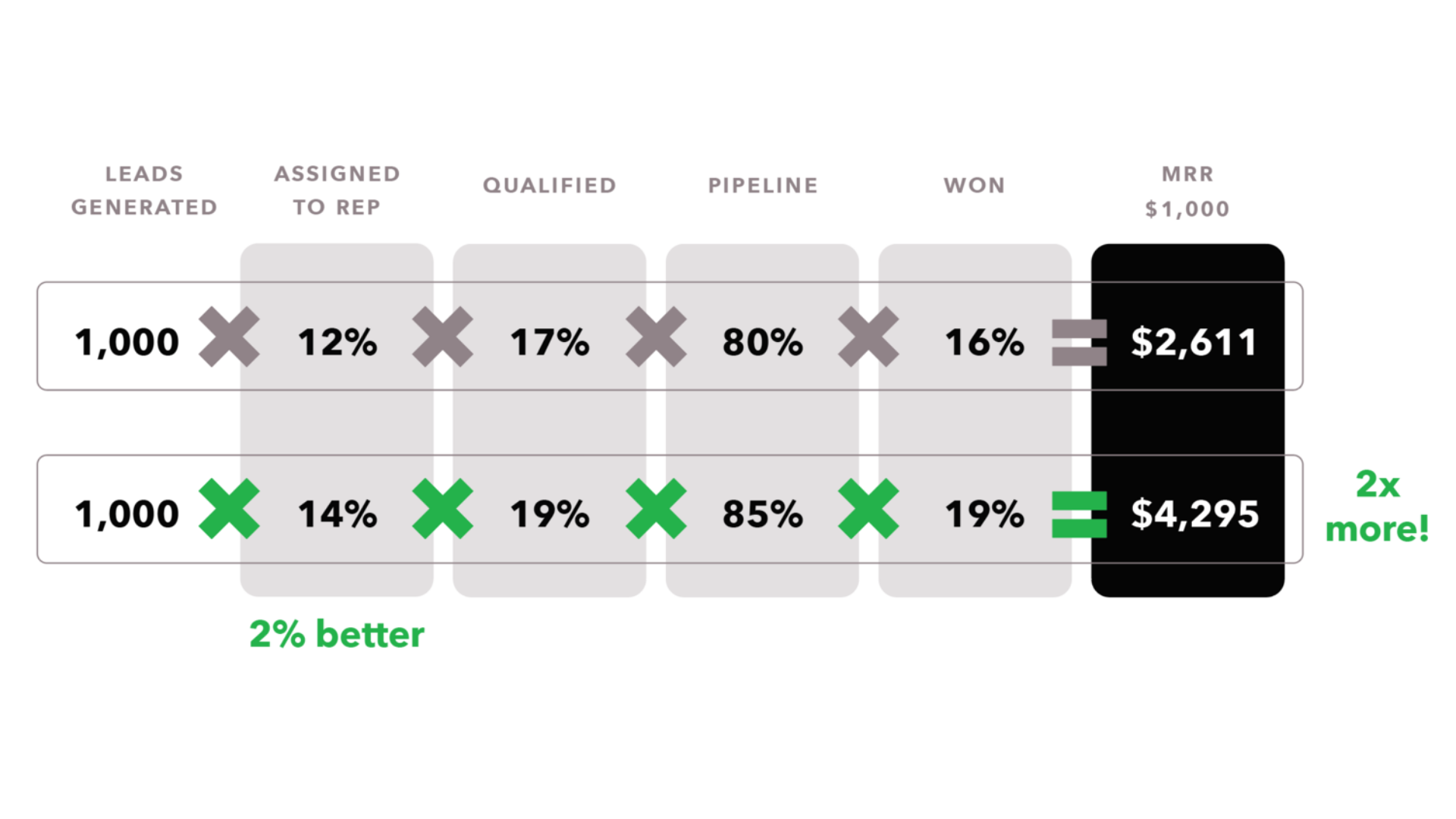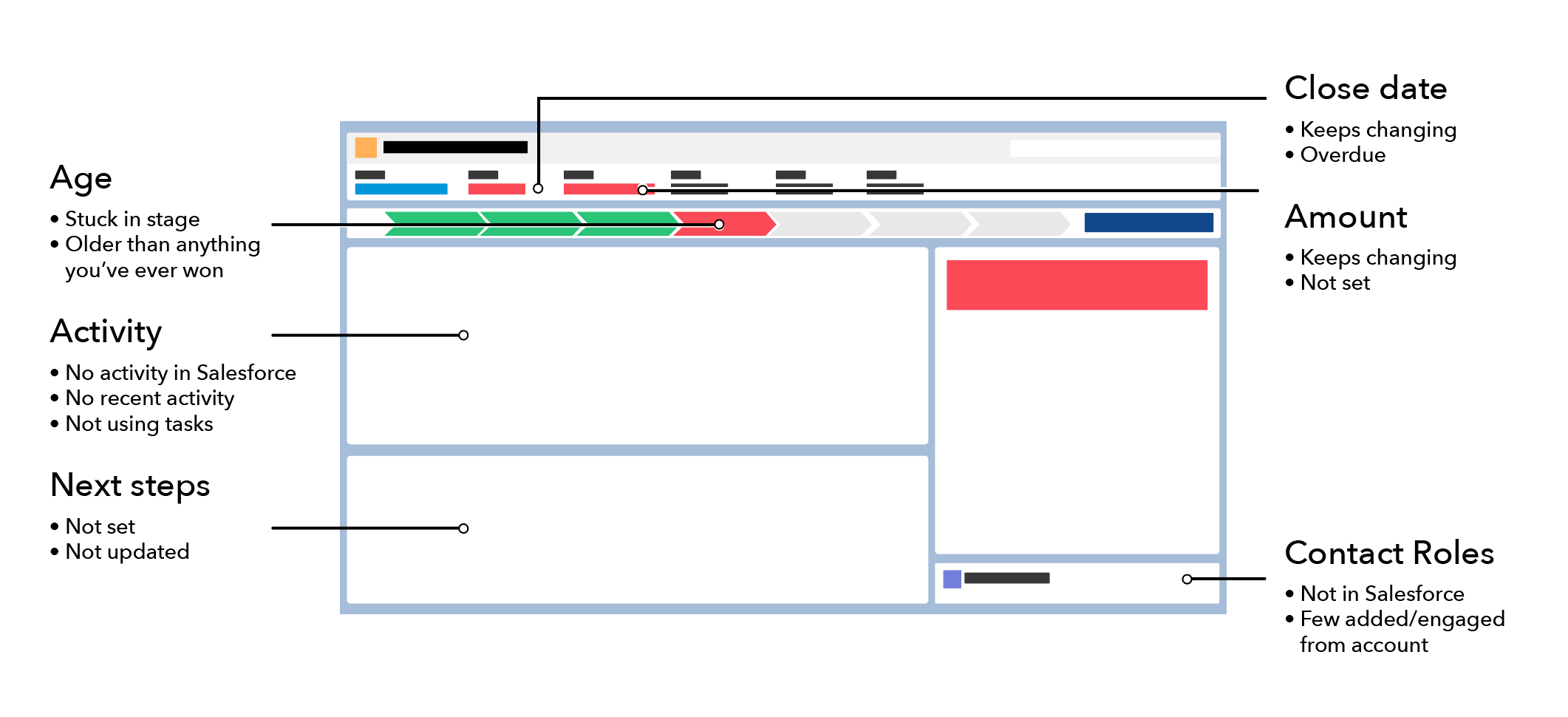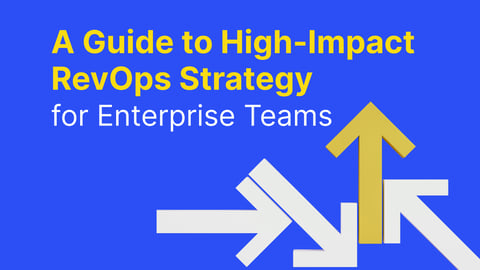The Fear.
It’s that familiar, uncomfortable feeling in your gut that keeps you up at night. As a kid, I always worried about the monsters hiding in the closet. The Fear kept me hiding under the covers, hoping that if I don’t see the monsters, they can’t eat me. Blindness to the problem would keep me safe.
But I’d be stressed out all night. Instead, I learned to face that fear. All I had to do was turn on the lights.
Now, The Fear is about what’s lurking in the pipeline. Is it real? If you shine a light on it, does it go away?
It can be daunting. If you’re a rep, how do you tell your manager you don’t have enough pipeline to make your number? If you’re the CRO, how do you tell the board that you thought you had 4X coverage, but it’s really closer to 1X coverage?
This is The Fear. You can ignore it, because your historical coverage says you’re okay. You’ve made it through the night before.
Or you can face it, and take control of your actions. The Fear can be your friend.
Without paying close attention to deal hygiene and having a consistent and direct view into the deal lifecycle, your pipeline becomes inflated and the truth gets distorted. Saddled with an inflated pipeline and a false sense of security, your data explodes; the CRM data gets messy and inaccurate; your forecasting becomes inaccurate fast. No one knows what’s real or anymore.

Here is where you can end up in the forecast accuracy trap. Some amount of pipeline isn’t real, which means the forecast and financial models don’t line up to expectations. You try to control the forecast, but the forecast is an output of everything you did 3 months ago.
A bad forecast is a symptom of poor operations, not the cause.
The effeciency of the business starts to suffer because the pipeline dictates operations: hiring, marketing spend, capital investment, the list goes on.
Fear should spur you to action. Seeing reality means separating what you can influence during the deal process and what you can control; breaking them down into daily, actionable changes and behaviors throughout the deal lifecycle.
Karen Hayward once told me, “What my manager finds interesting, I find fascinating.” As a revenue leader, this puts you in a place of influence – are your reps enabled to execute on the systems and processes within your sales organization, or focused on the story of the pipeline? Changing behavior at a micro level gives you more insight into your pipeline and improves your confidence because you know the numbers reflect reality.
You can’t change what you can’t see. What gets measured gets managed.

Let’s look at what you can influence:
- Why buy? - Why is your product different and unique from others in the space? What business problems does it solve that others don’t?
- Why buy now? - Purse strings are tight right now; why should a prospect invest their shrinking budget on your offering? Can you clearly articulate the short and long term ROI?
- Why buy us? - How does your company’s value proposition and roadmap align with and drive growth for your customers?
You can influence, but you can’t control your buyers’ actions. You do control your daily behaviors:
- You control how frequently do you engage with prospects?
- You control how many contacts do you engage in an account ?
- You control how you forecast deal size and close dates internally
- You control how you manage the process and next steps during deal lifecycles
- You control if you’re maintaining a healthy pipeline of realistic deals

Conquer your pipeline fears
Here’s the boring reality: as a sales rep it’s in the company’s best interest to help you make your number. When your number is light, your manager’s number is light. When your manager’s number is light, their VP’s is. When the VP has a light number, the company does.
So as an organization, when you face your fears about what’s real, or not real, in your pipeline it spurs everyone to action. Sure, you might have a day of excitement when everyone freaks out. But then the very smart people you choose to work with every day will take action to solve the problems.
- If Marketing knows that pipeline is light, they can create new programs to help drive leads in specific segments or territories
- If the SDR team knows pipeline is light, they can start an outbound program to re-engage closed lost opportunities
- If it’s a consistent problem – or endemic to changing markets in the global economic crisis – your team might change territories or market segments
- If you have just enough coverage, your revenue team help make sure you get the core deals required over the finish line
But all of these actions start with acknowledging what’s real. By turning on the light to see if there are any monsters hiding in your pipeline.




